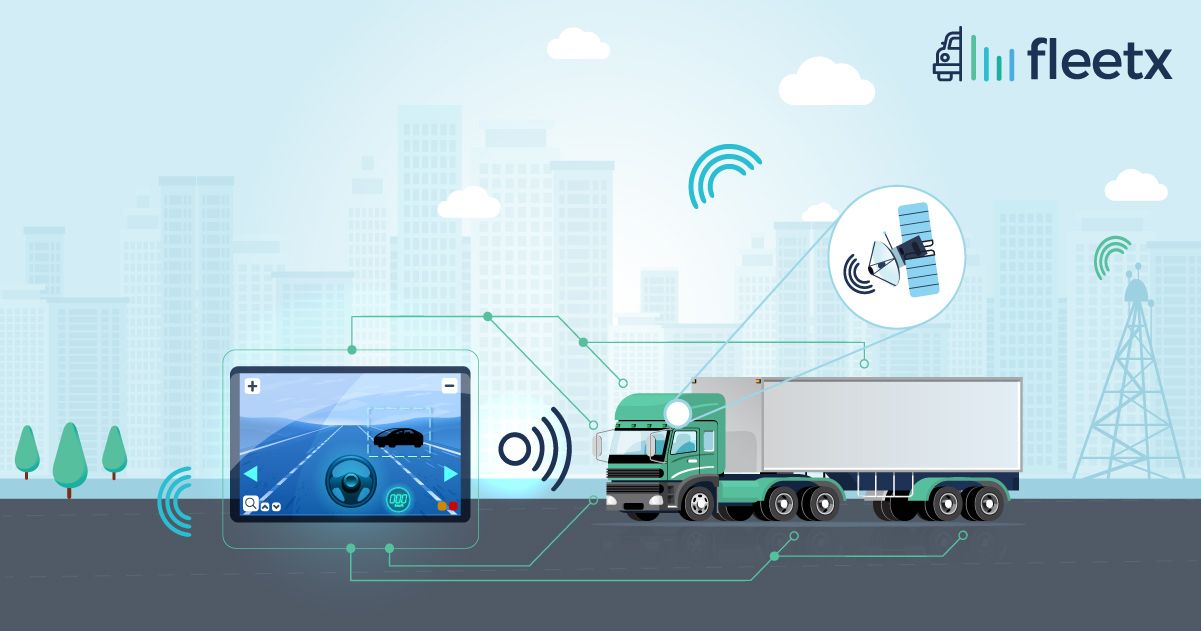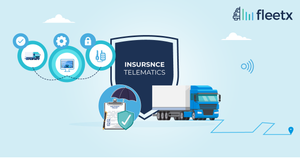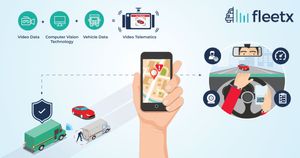
India has one of the fastest growing economies. With a $3 trillion economy, India is the sixth-largest economy in the world. The transportation sector, which accounts for 6.3% of the country's GDP, is mostly controlled by the road sector. And with the transportation industry growing quickly, hand in hand, telematics is making a positive appearance in the entire transportation sector.
Constantly, the telematics sector develops and incorporates new technology. In reality, the development of advanced video technology has brought about a profound transformation in the field of video telematics. This makes it possible for fleet managers to understand and manage their fleets. Additionally, it provides fleet managers with 360° of transparency and makes fleets and their drivers safer than before.
The trucking industry needs video telematics technology more than ever, and it may eventually replace other hardware requirements for large commercial trucks. Technology may be a major factor in helping businesses save money and resources while also ensuring that their fleets adhere to industry norms and requirements.
By the end of 2019, it is anticipated that India's vehicle telematics market would have surpassed $500 million. In 2021, the commercial telematics market in India had a value of $1,005 million USD. The market is anticipated to grow at a CAGR of 21.52% from 2022 to 2027, reaching US$ 3,119 million.
A rising variety of safety features that are specifically created to improve the safety of drivers, passengers, and pedestrians are being implemented using video telematics. Every fleet manager that places a high priority on safety in their business will be interested in choosing a video telematics system.
What are fleet managers' top priority?
The retention of their drivers is the main concern of all fleet managers. 36% of fleet managers place safety at the top of their priority list. According to FMCSA estimates, driver distraction causes 71% of large-truck collisions. Defending against false claims, rising insurance costs, and fleet damage are a few of the concerns. Sometimes, these issues make it more difficult for fleet owners to defend assets and drivers against false allegations. One of the main objectives for all fleet owners is still to increase the overall effectiveness of the fleet, which video telematics solutions can help to accomplish.
According to Paul Ripley, " Telematics is a groundbreaking flash of inspiration that could become a future game changer... a life saver by default. It is something that will bring a big change in the insurance and fleet operator sectors. It is something that is set to transform the way insurance companies set new parameters on the driver risk they cover and something that will grow exponentially over the next few years. "
Even with a market penetration of less than 15%, telematics is already having a significant impact on transportation. A recent Work Truck pulse survey revealed that video telematics still has a ways to go before being viewed as an essential safety tool for the sector. According to work truck reports, 64 percent of respondents claimed their fleet had not deployed video telematics, compared to 36 percent who said they had. The majority of those who have used video telematics reported that it has improved their fleet's safety (65%). Video telematics should be made a requirement by the Indian government after seeing such a significant improvement and potential changes in the sector. The transport sector in India will gain a lot from it.
In addition to this, the use of video telematics can provide a number of other advantages, including:
Boosting Driver Safety: The implementation of video telematics will aid in the development of fleet management solutions that involve drivers and advance safety. Driving incentives based on different metrics, such as the number of days without an accident and the number of kilometers traveled safely, will improve safety standards and encourage improved performance from drivers. The system for 360-degree monitoring will protect both drivers and vehicles.
Driver coaching and driver motivation: Telematics data on aggressive driving behaviors like hard braking and speeding is important for driver teaching and motivation. It can lower fuel usage and provide more effective routes. Giving drivers practical advice during coaching sessions can promote respect for one another, create a sense of trust, and assist them to retain drivers for a very long time. It will improve both drivers' and fleet managers' capacity to make the appropriate decisions. Driver training will assist drivers become more aware of their blind spots and improve their abilities on the roads by utilizing video telematics data.
Third-eye representation: Road accidents usually result in drawn-out claim negotiations. Video evidence acts as a trustworthy "third eye" that helps fleet insurance disputes get resolved more swiftly while shielding drivers from unwarranted blame for the incident. Fleet owners and insurance partners can analyze events more quickly by accessing video footage, which lowers total fleet expenses associated with crashes and lowers insurance costs. Video telematic systems are prepared to respond to all the crucial inquiries regarding the event since they have both an outside and an interior camera view. It will also offer comprehensive insights and give a more comprehensive and detailed picture of an accident and help identify its primary cause. Therefore, it will lead to preventing reputational harm and asset damage.
Saving time: While fleet businesses are aware of the value that video data can offer, they do not want to waste their time or money looking through pointless data. Fleet drivers are aware of continual observation. Video Telematics will simply keep track of crucial incidents involving dangerous driving habits to avoid problems.This allows fleet owners and their drivers to concentrate on the most crucial video.
Constant real-time improvement: Drivers may be coached and given the chance to improve their abilities using video as a potent teaching tool. Additionally, this will raise fleet managers' and drivers' awareness of their fleet's problems and enable them to address them immediately. Implementation of such functions will facilitate manager’s to proactively address problems and find solutions right away from their desk.
Reduces cost and enhances efficiency: Efficiency is increased while costs are decreased because video telematics gives drivers a safe driving environment, which reduces accidents, insurance costs, and asset damage. You may use it to get a variety of data and information about your fleets. This will assist businesses in problem-solving. In the long-term, this technology will encourage eco-driving.
In conclusion, video telematics directly benefit the fleet owners , insurance companies, and the drivers. It provides protection against claims, false claims, and cargo theft, improves fuel efficiency, helps drivers continually improve their driving skills, creates a safer working environment, offers risk insights, and makes the investigation process simple. It also increases driver retention and fuel efficiency.
Conclusion
Video Telematics has the potential to be the key factor for the growth of the fleet management industry. In addition to government regulations , upgrading video telematics in the transportation industry will optimize fleet operations, expenses and benefit the drivers and fleet owners by providing safety measures. It will not only impact the sector, but the prevention of road accidents will also safeguard pedestrians. The government’s progressive push for safety and efficiency in the transportation sector should consider mandating video telematics , as it is proving to be another significant technological upgrade.
Why is video telematics important?
Video telematics provides access to qualitative data that is illustrative and intellectual. It gives an incident additional context, and the telematics equipment instantly and sends the video footage to fleet management over a cellular network. Given that video footage is the strongest possible proof, fleet managers may put speculation to rest and identify the guilty party. Additionally, it improves vehicle and driver management, lowers accident risks, is dependable, guards against theft, lowers insurance costs, and guards against bogus claims.
Is video telematics worth having?
Yes, video telematics is worth having because it benefits fleet managers, vehicle, cargo and drivers all together. It is the third-eye of the vehicle which protects cargo and vehicle from any mishap, it protects drivers from false accidental claims, it helps in reducing insurance claims and safeguards cargo from theft. Above all, round the clock visual tracking helps in monitoring driver behavior and prevents accidents.






